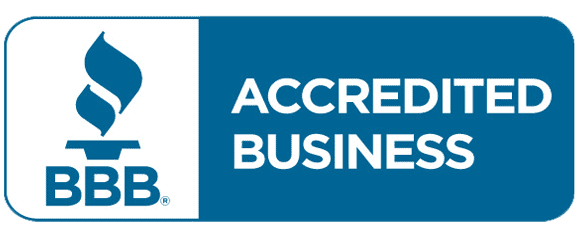Overcoming Common Coaching Challenges: A Guide for New Coaches
Starting your journey as a life coach can feel like standing at the edge of a diving board—exhilarating yet intimidating. You’ve completed your training, you’re passionate about helping others, but then reality hits: real clients bring real challenges that your textbooks didn’t quite prepare you for.
Every seasoned coach has been where you are now. We’ve all faced that moment when a client asks a question that stumps us, or when progress seems to stall despite our best efforts. The good news? These challenges aren’t roadblocks—they’re stepping stones to becoming a more skilled, confident, and effective coach.
In this comprehensive guide, we’ll explore the most common coaching challenges new coaches face and provide you with practical strategies to navigate them successfully. You’ll discover how to handle difficult conversations, manage your own emotions during sessions, and build the confidence that transforms good coaches into great ones.
Whether you’re just starting your coaching practice or looking to refine your skills, this guide will equip you with the tools and mindset needed to overcome obstacles and create meaningful transformations for your clients.
Challenge 1: Dealing with Resistant Clients
Understanding Resistance
Client resistance is one of the most common challenges new coaches encounter. It might manifest as missed appointments, reluctance to complete assignments, or pushback against your suggestions. The key is understanding that resistance often stems from fear, past experiences, or feeling overwhelmed rather than a lack of motivation.
Strategies to Address Resistance
- Create Safety First: Ensure your client feels heard and understood. Sometimes resistance melts away when clients feel truly seen.
- Explore the Resistance: Ask curious questions like “What concerns you most about this approach?” or “What would need to be different for this to feel right for you?”
- Start Smaller: If a goal feels overwhelming, break it down into micro-steps that feel manageable.
- Acknowledge Their Expertise: Remember that clients are the experts on their own lives. Honor their perspective and work collaboratively.
Real-World Example
Sarah, a new coach, was working with Mark, who consistently missed sessions and seemed disengaged. Instead of confronting him about his commitment, Sarah asked, “Mark, I’m sensing some hesitation. What’s really going on for you?” Mark revealed he felt judged and was afraid of failing again. This opened up a deeper conversation about his fears, and their coaching relationship transformed.
Challenge 2: Managing Your Own Emotions During Sessions
The Emotional Rollercoaster
As coaches, we’re human beings with our own triggers, experiences, and emotional responses. When a client shares something that resonates with our own struggles or when we feel frustrated by their lack of progress, it can be challenging to maintain professional boundaries while staying emotionally present.
Emotional Regulation Techniques
- Pre-Session Centering: Take 5 minutes before each session to ground yourself through deep breathing or brief meditation.
- The Pause Practice: When you feel triggered, take a moment to pause and ask yourself, “What is mine to feel, and what belongs to my client?”
- Post-Session Processing: Keep a coaching journal to process your reactions and identify patterns in your triggers.
- Seek Supervision: Regular supervision or peer coaching can help you work through challenging emotional responses.
Professional Boundaries
Remember that your role is to hold space for your client’s emotions, not to fix or absorb them. It’s okay to feel moved by their story, but maintaining professional boundaries protects both you and your client.
Challenge 3: Handling the “I Don’t Know” Moments
When You’re Stumped
Every coach faces moments when they genuinely don’t know how to help a client or what question to ask next. These moments can trigger imposter syndrome and make you question your abilities. The truth is, not knowing is often the beginning of deeper discovery.
Strategies for Unknown Territory
- Embrace Curiosity: “I’m curious about that. Can you tell me more?” is often more powerful than having the perfect answer.
- Ask the Client: “What do you think would be most helpful right now?” or “If you were coaching yourself, what would you suggest?”
- Use Silence: Sometimes the most powerful thing you can do is sit in comfortable silence and let the client process.
- Admit You Don’t Know: “I don’t have an immediate answer for that. Let’s explore it together.” This honesty often deepens trust.
Building Your Coaching Toolkit
Develop a repertoire of go-to questions and techniques that you can draw upon when you feel stuck. Practice these until they become second nature.
Challenge 4: Building Confidence in Your Abilities
Imposter Syndrome in Coaching
Many new coaches struggle with feeling “not qualified enough” or worry that clients will discover they don’t have all the answers. This imposter syndrome can paralyze your effectiveness and prevent you from showing up authentically.
 Confidence-Building Strategies
Confidence-Building Strategies
- Focus on Your Why: Remember why you became a coach and the unique perspective you bring to your clients.
- Celebrate Small Wins: Keep track of client breakthroughs and positive feedback to remind yourself of your impact.
- Continuous Learning: Invest in ongoing education and skill development. The more you learn, the more confident you’ll feel.
- Practice Self-Compassion: Treat yourself with the same kindness you’d show a client who was struggling.
Reframe Your Role
You’re not supposed to have all the answers. Your job is to ask powerful questions, hold space, and guide clients to find their own solutions. This reframe can be incredibly liberating.
Challenge 5: Setting and Maintaining Boundaries
The Boundary Challenge
New coaches often struggle with setting appropriate boundaries, whether it’s clients calling outside of session times, wanting to extend sessions, or expecting you to solve all their problems. Clear boundaries actually enhance the coaching relationship rather than limit it.
Essential Boundaries to Establish
- Time Boundaries: Start and end sessions on time. Be clear about your availability for between-session contact.
- Scope Boundaries: Be clear about what coaching is and isn’t. Know when to refer clients to other professionals.
- Emotional Boundaries: Care about your clients without taking responsibility for their choices or outcomes.
- Professional Boundaries: Maintain the coach-client relationship and avoid dual relationships.
Communicating Boundaries
Frame boundaries as structures that support the client’s growth rather than restrictions. For example: “To ensure our sessions are most effective, we’ll start and end on time so you can fully focus during our time together.”
Challenge 6: Dealing with Slow or Stalled Progress
When Progress Feels Stuck
Not every client will have dramatic breakthroughs, and progress isn’t always linear. When clients seem stuck or progress stalls, it can be frustrating for both coach and client.
Strategies for Stalled Progress
- Revisit Goals: Are the goals still relevant and meaningful to the client? Sometimes what seemed important initially no longer resonates.
- Explore Underlying Beliefs: What beliefs might be sabotaging progress? Help clients identify and challenge limiting beliefs.
- Change Your Approach: If one method isn’t working, try a different coaching technique or perspective.
- Celebrate Micro-Progress: Sometimes progress is happening in ways that aren’t immediately visible. Help clients recognize small shifts.
The Power of Patience
Remember that transformation takes time. Your job is to trust the process and help clients stay committed to their growth journey, even when progress feels slow.
Challenge 7: Managing Your Coaching Business
Beyond the Coaching Sessions
Many new coaches are surprised by the business aspects of coaching—marketing, client acquisition, administrative tasks, and financial management. These “non-coaching” activities are essential for a sustainable practice.
Business Management Tips
- Systems and Processes: Develop clear systems for scheduling, client communication, and session notes.
- Marketing Authentically: Share your story and approach in ways that feel genuine to you.
- Financial Planning: Set clear rates, payment policies, and track your business expenses.
- Professional Development: Budget time and money for ongoing training and certification maintenance.
Finding Balance
Remember that building a coaching practice is a marathon, not a sprint. Focus on sustainable growth rather than trying to do everything at once.
Embracing the Journey
Reflective Takeaway
Every challenge you face as a new coach is an opportunity for growth—both for you and your clients. The coaches who thrive aren’t those who never encounter difficulties, but those who learn to navigate challenges with grace, curiosity, and resilience.
Remember that becoming a skilled coach is a lifelong journey. Each client teaches you something new, each challenge makes you stronger, and each breakthrough reminds you why you chose this path. The struggles you’re experiencing now are shaping you into the coach you’re meant to become.
Your Next Step
This week, identify one coaching challenge you’re currently facing. Instead of seeing it as a problem, approach it with curiosity. What is this challenge trying to teach you? How might working through it make you a better coach? Share your insights with a mentor or peer coach for additional perspective.
Ready to build the skills and coaching confidence to overcome any challenge? Our comprehensive Confidence Life Coaching Certification program (60% off!) provides you with the tools, techniques, and ongoing support you need to navigate the complexities of coaching with confidence. Join a community of coaches committed to excellence and continuous growth.






